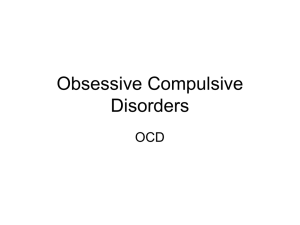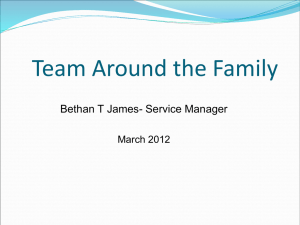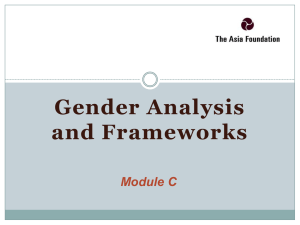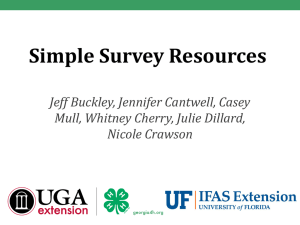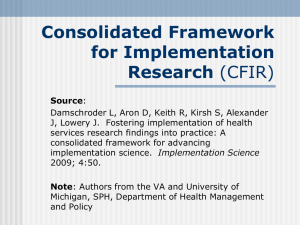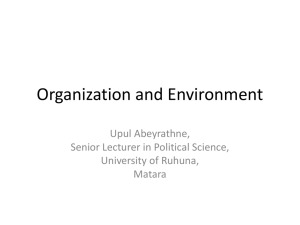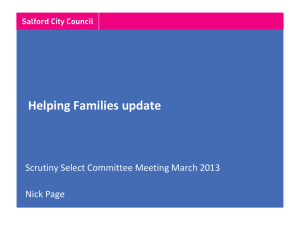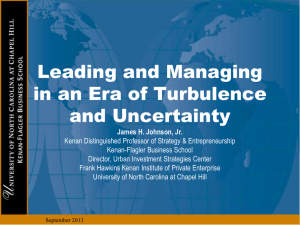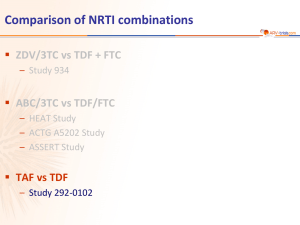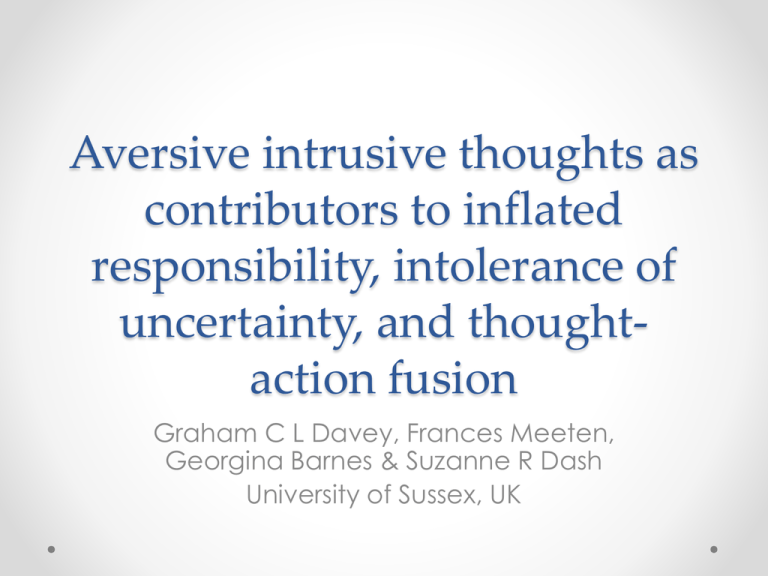
Aversive intrusive thoughts as
contributors to inflated
responsibility, intolerance of
uncertainty, and thoughtaction fusion
Graham C L Davey, Frances Meeten,
Georgina Barnes & Suzanne R Dash
University of Sussex, UK
What are Clinical
Constructs?
• “Inferred states or processes derived most often
from the clinical experiences of researchers or
clinicians in their interactions with patients” (Davey,
2003)
• Clinical Constructs have various functions:
o To help understand psychopathology symptoms
o To provide a basis for developing interventions
o To link thoughts, beliefs and cognitive processes to
subsequent symptoms (often in an implied causal manner)
Examples of Clinical
Constructs in OCD
Research
• Inflated Responsibility (Salkovskis, 1985)
• Intolerance of Uncertainty (Dugas et al., 1998)
• Thought-Action Fusion (Shafran & Rachman, 2002)
Inflated Responsibility
• “The belief that one has the power to bring about
or prevent subjectively crucial negative outcomes”
(Rachman, 1998; Salkovskis, 1985)
Intolerance of Uncertainty
(IU)
• A “dispositional characteristic that arises from a set
of negative beliefs about uncertainty and its
connotations and consequences” (Birrell et al.,
2011, p1200) and is underpinned by beliefs such as
‘uncertainty is dangerous/intolerable’ (Koerner &
Dugas, 2006)
Thought-Action Fusion
(TAF)
• A set of cognitive distortions involving erroneous
and maladaptive beliefs about the relationship
between mental events and overt behavior, and
specifically that thinking unacceptable thoughts
(e.g. having sex with a parent; thinking about one’s
house burning down) are either moral equivalents
of performing unacceptable behaviour or will
increase the probability of that event happening
(Berle & Starcevic, 2005; Shafran et al., 1996)
The Present Studies
• Previous research has demonstrated a causal effect
of Constructs such as RESP, IU and TAF on OCD
symptoms
• Present studies reversed this experimental
procedure
• Investigated the effect of “symptoms” (thinking
forced aversive thoughts) on measures of
Constructs such as IR, IU and TAF
Experiment 1
• Exposure to Obsessive Aversive Thoughts (28
obsessive statements vs 4 obsessive/24 neutral
statements)in a nonclinical population
• Effects on measures of:
o Inflated Responsibility (Responsibility Attitude Scale)
o Intolerance of Uncertainty (Intolerance of Uncertainty Scale)
o Thought-Action Fusion (Thought Fusion Instrument, TFI)
• Constructs measured (1) on composite VAS scales,
and (2) on full validated questionnaires
Statements
• Aversive Statements
o “I will harm someone I love”
o “I will push someone under a train or bus”
• Neutral Statements
o “I will have my usual breakfast”
o “I will meet someone I know”
• Rachman & DeSilva (1978); Berry & Laskey (2012)
Results – Experiment 1
Mean composite ratings of RESP (p<.05), IU (ns)
and TAF (p<.05) by high and low obsessive
thought groups
Results – Experiment 1
Mean full questionnaire scores for RAS (p<.05),
IUS (ns) and TFI (p<.05) for high and low
obsessions groups
Experiment 2
• Exposure to Obsessive Aversive Thoughts (28
obsessive statements vs 4 obsessive/24 neutral
statements)in a nonclinical population
• Self-relevant vs Non-self-relevant
• Effects on measures of:
o Inflated Responsibility (Responsibility Attitude Scale)
o Intolerance of Uncertainty (Intolerance of Uncertainty Scale)
o Thought-Action Fusion (Thought Fusion Instrument, TFI)
• Constructs measured (1) on composite VAS scales,
and (2) on full validated questionnaires
Results – Experiment 2
Mean composite ratings of RESP (ns), IU (sig effect
of Obsessions + interaction) and TAF (sig effect of
Obsessions) by high and low obsessive thought
groups
Results – Experiment 2
Mean full questionnaire scores
for RAS (sig interaction, p<.05),
IUS (sig Main effect of
obsessions, p<.05) and TFI (sig
interaction, p=.05) for high and
low obsessions groups
High Obsessions/SelfReferent Groups
• RAS scores were comparable to obsessional and
anxious clinical samples
• TFI scores were higher than control norms but not as
high as clinical population norms
• Scores on the IUS were higher that student
population norms, but not as high as clinical norms
Mediating Factors
• No clear mediation models were observed
• In some cases negative mood (sadness and
anxiety) significantly mediated Responsibility
measures (e.g. Experiment 1)
• In other cases, construct measures (e.g. TAF and IU)
mediated the relationship between obsession
group and sadness/anxiety
Conclusions
• Experiencing aversive uncontrollable thoughts may
facilitate appraisal processes directly implicated in OCD
• Appraisals such as RESP, IU and TAF would not
necessarily have to be etiological precursors of OCD
symptoms
• Bidirectionality would be expected if symptoms,
constructs and negative moods are all part of a
functional ‘threat management’ network
• The development of clinical constructs may need more
care to prevent adaptive processes being confused with
dysfunctional symptoms in the construct’s definition

